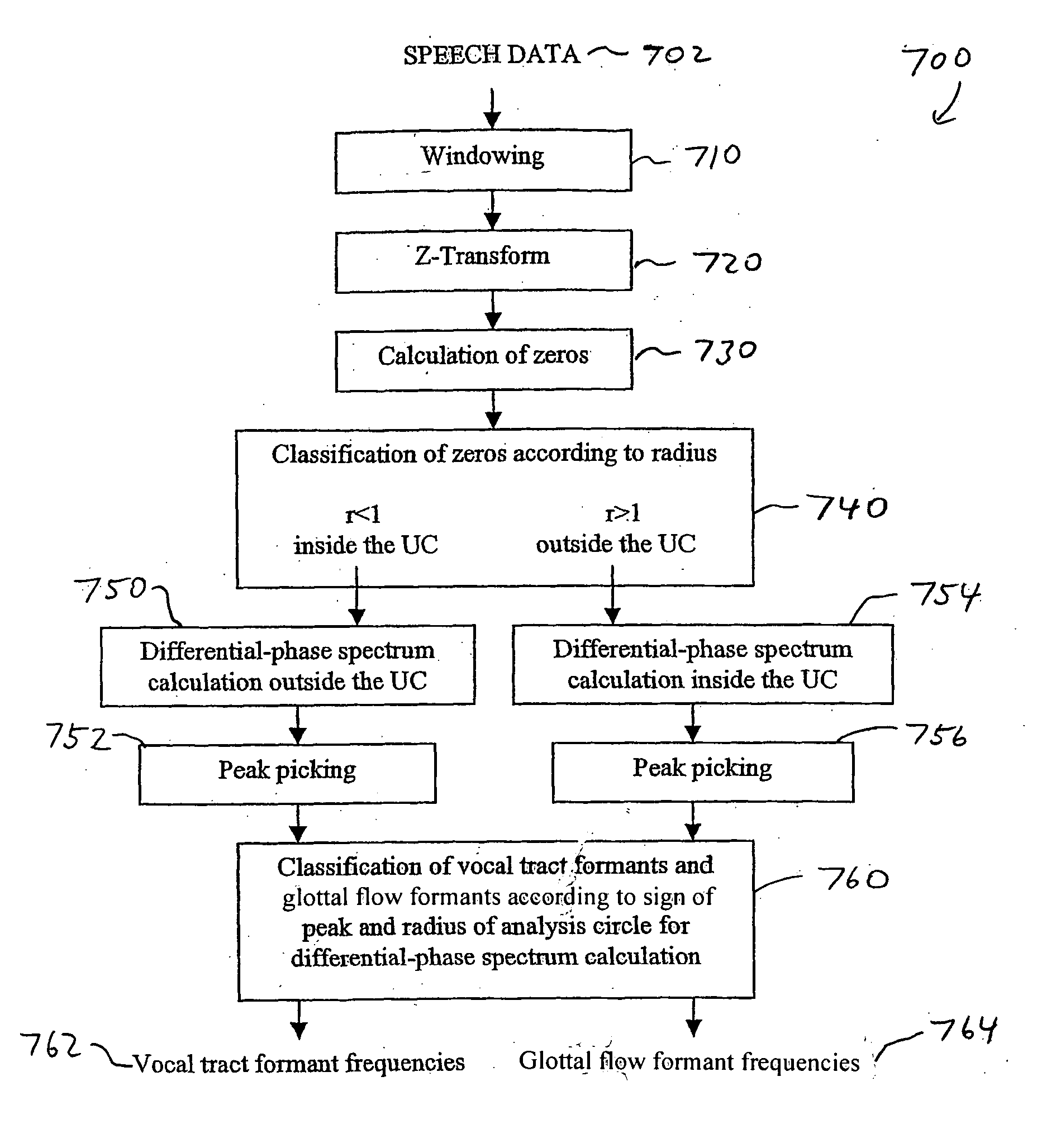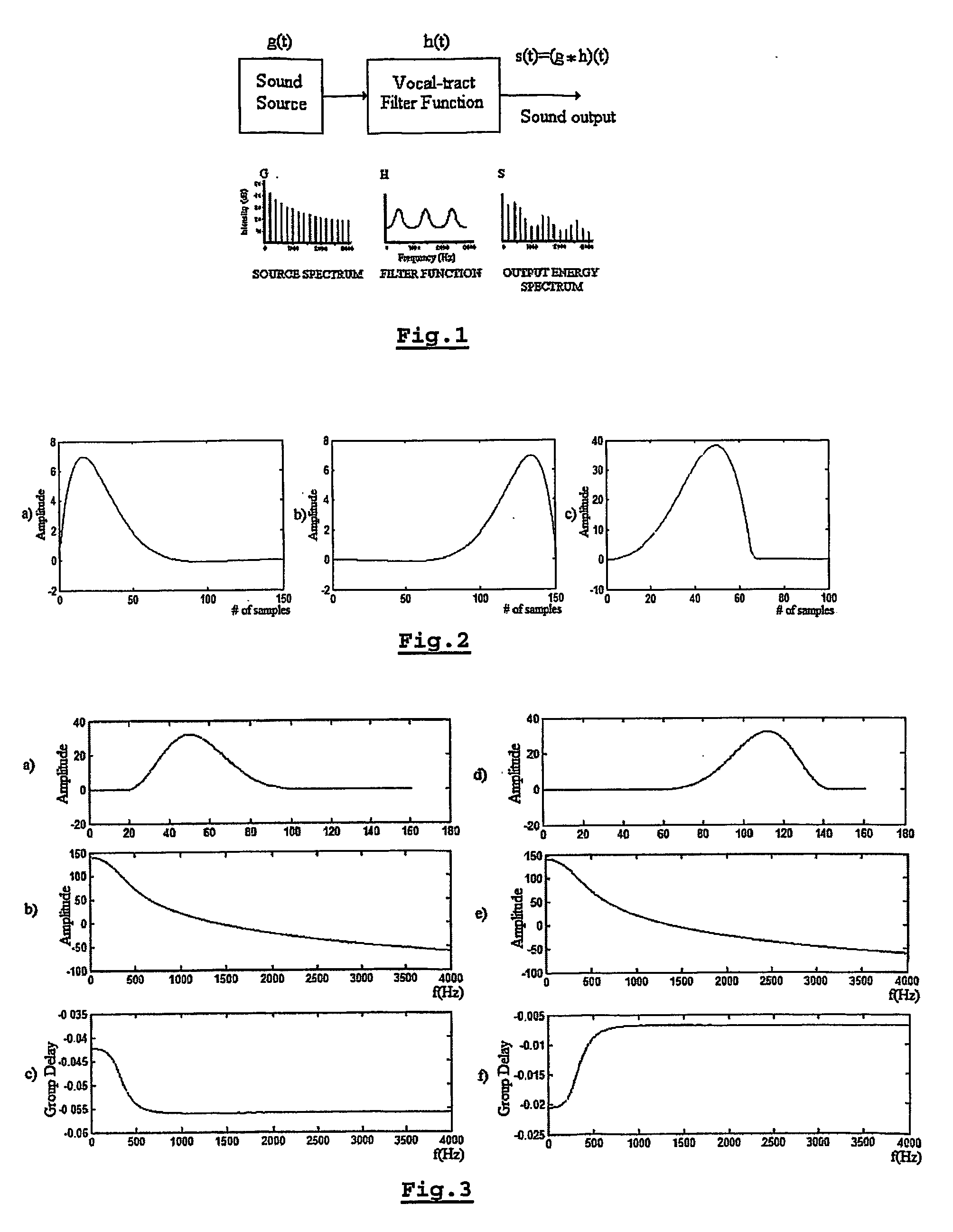Method for estimating resonance frequencies
a resonance frequency and frequency estimation technology, applied in the field of analysis techniques for recorded speech signals, can solve the problems of many difficulties and inefficiencies of lp estimation, reduced problem to relating source and tract resonance respectively, and techniques suffering from deficiencies
- Summary
- Abstract
- Description
- Claims
- Application Information
AI Technical Summary
Benefits of technology
Problems solved by technology
Method used
Image
Examples
Embodiment Construction
[0029] The invention targets the estimation of resonance frequencies (formant frequencies) of the source and the vocal tract contributions directly from the speech signal itself.
[0030] As will be shown, the source-tract separation problem needs to be handled with tools, which can detect anti-causal resonances. The technique according to the invention is more effective than current state of art methods, mainly because it is capable of detecting causal and anti-casual resonances without utilisation of a particular model of analysis, but only with spectral peak analysis. Additionally, the technique has no dependency on analysis degrees as in LP analysis systems.
[0031] The source-filter model (see FIG. 1) is usually accompanied by the assumption that a speech signal is a physical system output and therefore it is the output of a stable filter system. In a stable causal linear time invariant system, all the resonances of the signal shall correspond to poles inside the unit circle in z-...
PUM
 Login to View More
Login to View More Abstract
Description
Claims
Application Information
 Login to View More
Login to View More - R&D
- Intellectual Property
- Life Sciences
- Materials
- Tech Scout
- Unparalleled Data Quality
- Higher Quality Content
- 60% Fewer Hallucinations
Browse by: Latest US Patents, China's latest patents, Technical Efficacy Thesaurus, Application Domain, Technology Topic, Popular Technical Reports.
© 2025 PatSnap. All rights reserved.Legal|Privacy policy|Modern Slavery Act Transparency Statement|Sitemap|About US| Contact US: help@patsnap.com



